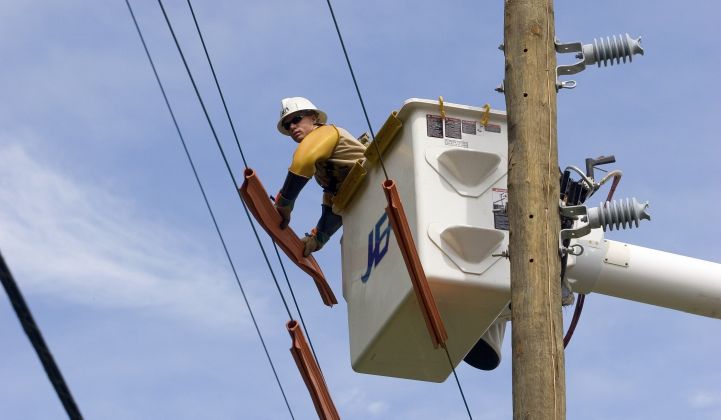JEA, the municipal utility in Jacksonville, Florida, has become a leader in the state's residential energy storage landscape with the introduction of a rebate program and an updated net metering structure. It is considered as one of the most innovative municipal utilities in the country.
Julio Romero Agüero is JEA’s Chief Innovation and Transformation Officer, and the person heading up DER integration, EV charging infrastructure development and digitalization for energy efficiency across the company.
We sat down with Julio ahead of his participation as a speaker at Grid Edge Innovation Summit 2019 on June 18-19 in San Diego.
GTM: JEA is one of the most innovative U.S. municipal utilities when it comes to residential storage. With digital tools being key to integrating these resources, what are JEA’s main priorities for digital transformation this year?
Julio Romero Agüero: We want to develop a cohesive and comprehensive technology strategy that accounts for key digital transformation factors such as interoperability, cybersecurity, technology obsolescence, data governance, big data analytics, cloud solutions, and artificial intelligence. As we evolve into a digital and customer-centric utility, information systems, telecommunications, automation and control will become pervasive and more important than ever. Every asset we deploy in the field has the potential to be a sensor, i.e., a data source.
We need to cover the basics and excel at our foundational technology capabilities (such as data collection, processing, and analysis), to enable and be able to focus and prepare for the next wave of disruptive technologies and concepts. Disruption is the new normal. We need to be proactive, take the lead and anticipate changes, so we can continue adding value to our customers and community, and remain relevant in the future.
GTM: Among the innovation pilots JEA has in its pipeline, which most excite you?
Julio Romero Agüero: I'm excited about the opportunity to transform our industry through the adoption of new technologies and business models — about the pace of innovation and technology change. It is great to see innovative concepts, such as microgrids or distributed energy storage — which until very recently were considered research topics — become a solution to real industry problems.
There is huge potential for synergies between the services we provide (energy and water and wastewater management), and the opportunity to create real financial and environmental value for our customers and community in Florida.
GTM: What is the single biggest hurdle the industry is facing in the digitalization journey?
Julio Romero Agüero: Regulation remains the biggest challenge. Technology changes have largely outpaced regulatory frameworks, and although technical challenges remain — such as interoperability — I have seen enough progress in the last 10 years to remain confident that our industry can develop solutions to emerging problems.
However, we need to create new regulatory frameworks that allow utilities to efficiently and effectively provide the services that our customers demand. For instance, there should be a straightforward regulatory framework and business models to allow the adoption (beyond pilots) of community microgrids for resiliency improvement, particularly in areas that are expected to be affected by extreme weather derived from global warming.
GTM: Some innovative concepts like transportation electrification, transactive energy or long-duration energy storage are gaining more momentum. Which of these trends holds the biggest potential and why?
Julio Romero Agüero: I believe energy storage has the potential to transform our industry at a scale comparable to how cellphones transformed the telecommunications industry. I think it will enable the emergence of a hybrid grid (particularly in new construction), where prosumers will be largely independent, and the grid will become the backup and balancing system, rather than the main supply.
We need to be creative and prepare for that future by offering to manage and optimize a portfolio of new products and services for our customers, becoming a trusted advisor for their energy needs.
GTM: Your career in the electricity sector spans over 20 years in the U.S. and Honduras. What didn’t you see coming in this industry?
Julio Romero Agüero: I thought transportation electrification would happen faster, and I expected concepts such as vehicle-to-grid would have become common by now. But the pace of adoption of these technologies has not been as fast as that of photovoltaic solar.
Having said that, I believe this time is for real, and electric and autonomous vehicles will be an important component of our immediate future.
Come to San Diego on June 18-19 for Grid Edge Innovation Summit 2019 and join JEA and other smart grid powerhouses, including AEP, Exelon, SCE, Ameren, IBM, Opus One Solutions, LADWP and many more.




